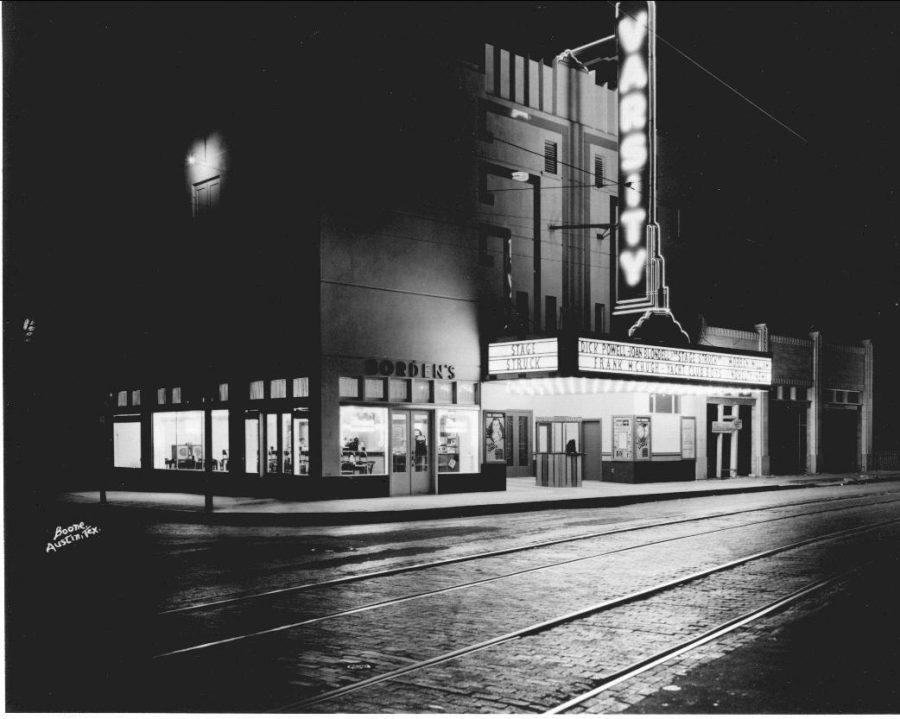With a March 19 budget deadline looming, The Daily Texan is operating on a six-figure projected deficit for a third year, joining college newspapers across the nation trying to find their place in a shrinking advertising market.
The Texas Student Media Board of Trustees, which oversees the Texan as well as KVRX, TSTV, the Texas Travesty and the Cactus Yearbook, will meet today to appoint an interim director who must oversee the setting of the budget over the next two weeks.
“Traditional print media have spent almost 400 years running solely on a revenue model dependent on advertising,” said James Tidwell, chair of the Department of Journalism at Eastern Illinois University. “That model is broken. We’re going to have to find a new one.”
Advertising revenue at the Texan has fallen from $2,326,411 for the 2007-2008 fiscal year, to $1,352,632 for the 2010-2011 fiscal year.
Mark Morrison, lecturer in the School of Journalism and TSM board member, said the newspaper must develop its Web presence to stay relevant.
“The audience is moving very quickly to emphasizing online media and social media,” Morrison said. “This is the same challenge media is facing nationally. We’re behind where we need to be not because of what’s happened in the last couple of days or last couple of months, but because we have been slow to adopt the multimedia platform overall.”
In 2011, the Texan launched its new website but has been without a multimedia adviser for five months after the six-month employment of Jennifer Rubin ended in October.
Web advertising revenue for the paper fell to $52,363 last fiscal year from $67,108 for the 2007-2008 fiscal year.
In contrast to the Texan, Web advertising sales have almost tripled since fall 2011 for the University of Georgia’s independent student newspaper, The Red and Black, said faculty sponsor Harry Montevideo. The paper had previously been published daily, but decided to drop to a weekly print production and publish online content daily.
While Montevideo said it is too early to say exactly how much revenue will be made this year, he said he expects the publication to remain profitable and retain 75 percent of last year’s total revenue, despite a 30-35 percent decline in national advertising.
“We’re expecting to generate 95 percent of the local advertising revenue [The Red and Black] brought in last year,” Montevideo said.
As The Red and Black has moved away from daily print, The Daily Tar Heel at the University of North Carolina at Chapel Hill has emphasized the importance of maintaining a profitable print product while incorporating the Web platform, said general manager Kevin Schwartz.
The publication has worked for the past five years to develop multimedia facets including an online housing search and a dining guide on the newspaper’s website. Every advertiser can reach the Tar Heel’s audience through a print, Web or mobile app, Schwartz said. In addition, the paper has partnered with vendors to employ student staffers that create mobile apps for retail chains and manage social media for private companies.
Even with the development of online advertising, Schwartz said Web-based revenue cannot replace the printed newspaper. All of the Web revenue for The Daily Tar Heel totals approximately $150,000 annually while revenue from the print product totals $1.3 million, he said.
The printed newspaper is essential to The Daily Tar Heel’s success and making a fast transition to an all-digital platform is not a viable option for the newspapers, Schwartz said.
“You cannot flick a switch and convert the print product into digital streams to monetize,” he said.
Schwartz said maintaining a print product and developing Web advertising takes something the Texan does not currently have — leadership. The Texan has had three directors in the past three years, the same number of years since the paper posted a profit. It’s not so much a declining market base, but this lack of leadership that has likely affected the Texan’s ability to remain profitable, he said.
“There’s no reason The Daily Texan should have a deficit,” Schwartz said. “The Daily Texan, if properly run, will be just fine. You are sitting on a market of 600,000 people in one of the liveliest and most vibrant downtowns in America. The advertising potential is there.”
Printed on Wednesday, March 7, 2012 as: College media see transition to Web content




















